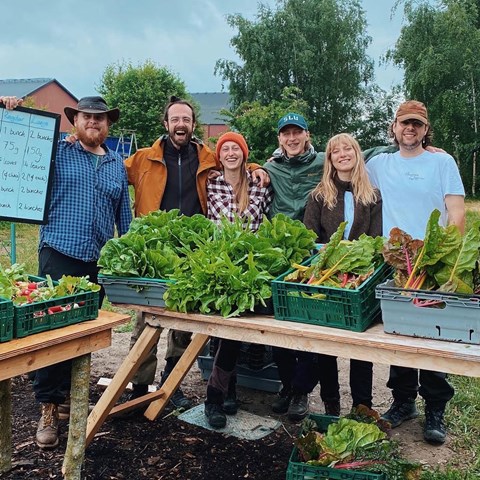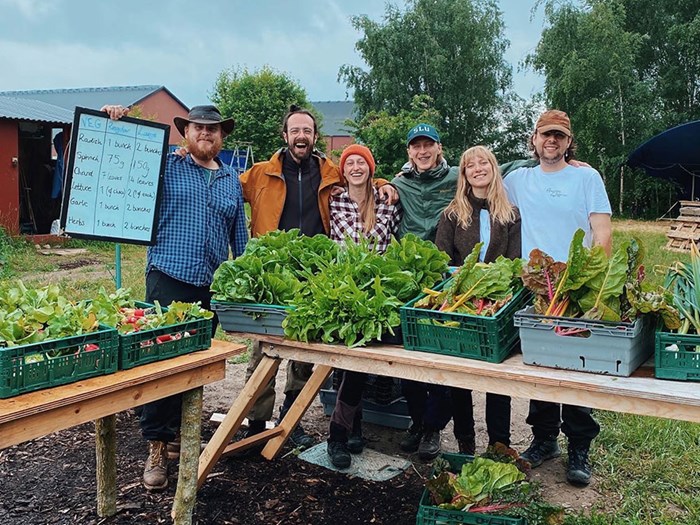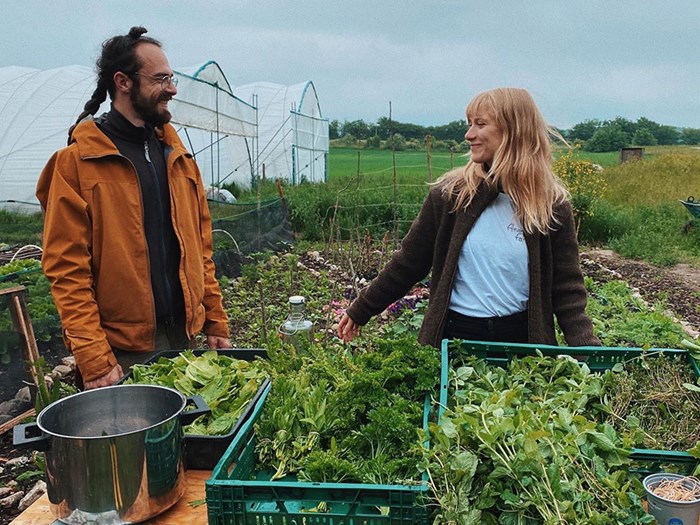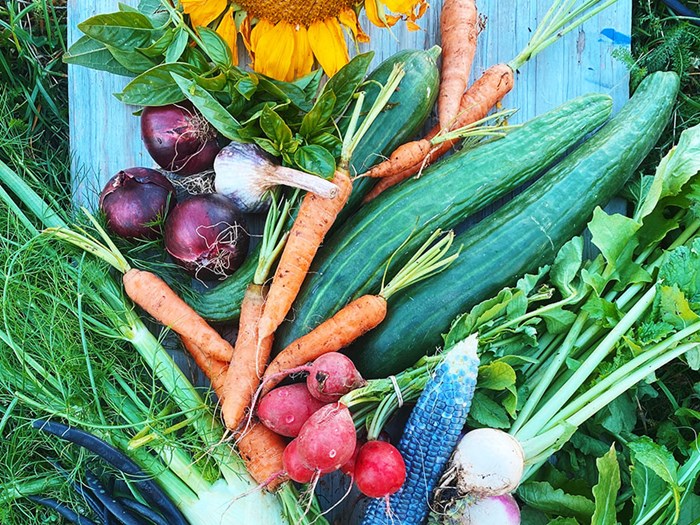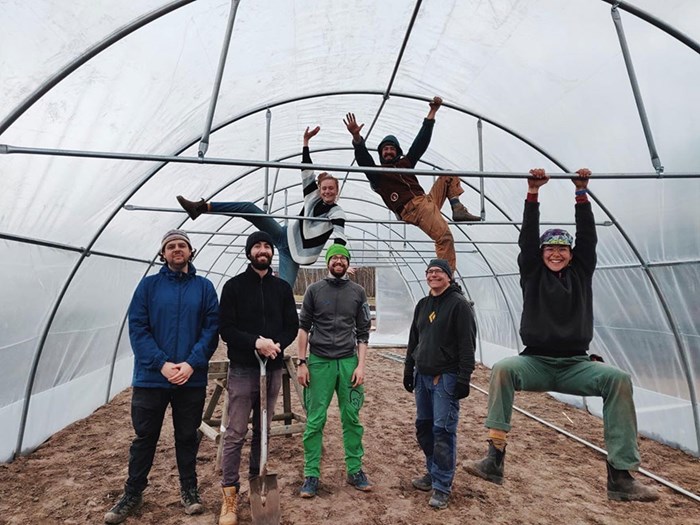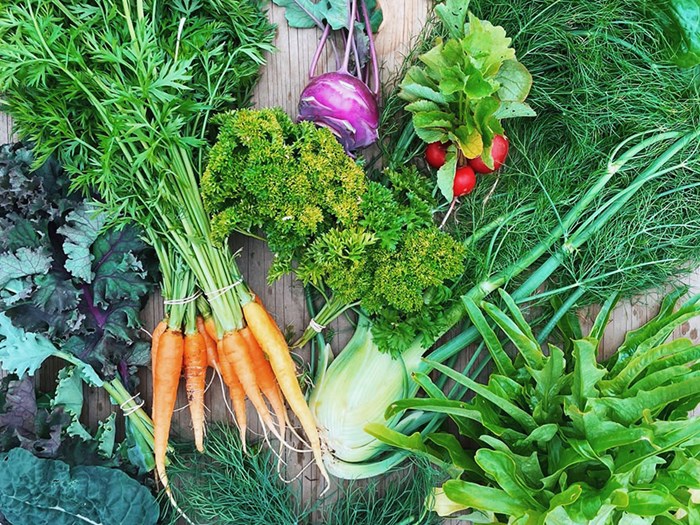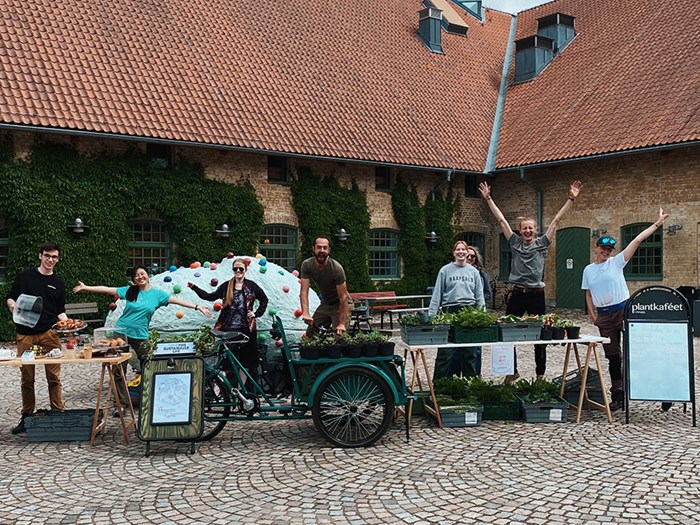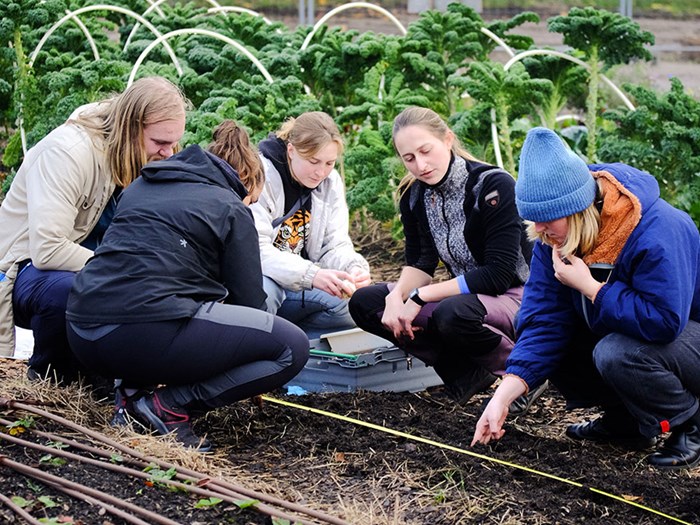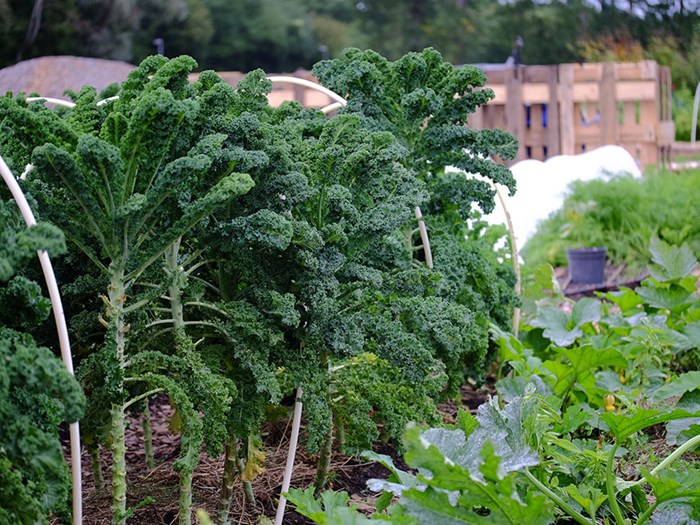The project was launched by a group of agroecology students in 2020 who found themselves deprived of practical, hands-on experience where they could apply their theoretical knowledge of agroecological farming. Doing what their courses and programmes could not, the students took matters into their own hands, developing a student-run organization and digging their first vegetables beds.
Now entering its third season, the Alnarp Agroecology team run two fully-fledged agricultural plots that provide produce for Community Supported Agriculture (CSA), farmers markets and harvest parties. Food&Cities has interviewed Claire, Secretary and Communications Manager, and Leon, Production Manager, to explore the organisation’s development and the importance of agroecology for creating a fairer and more sustainable food system.
Agroecology: an alternative vision for the food system
Broadly speaking, agroecology is the application of ecological principles to agricultural production systems. The Alnarp Agroecology Farm sees agrocology as more than simply a form of agricultural production but it rather provides a holistic perspective to view the food system comprising of a diversity of relationships between environmental, economic and social systems.
“For us it is a science, a movement and a practice. It is a way to view food as something that touches all parts of life. A way of creating systemic change through agriculture.”
The principles of agroecology have important implications for the way the organisation produces food, which is grown using organic or “beyond-organic” methods. More than this, agroecology provides inspiration for the way the farm is structured and organised, and the kinds of business models it uses:
“In practice, [agroecology] means we try to be socially, economically and environmentally sound and just. This translates to organic growing methods, to using voluntary work only, having no hierarchy, to supporting the development of a community; and being very transparent in our work”
The vision for a more sustainable alternative to the industrial food system requires a rethink of production, retailing and consumption practices, and alternative socio-economic models to support these practices. Whilst operating on a small scale, the implementation of Community Supported Agriculture (CSA) on Alnarp’s Farm goes someway to implementing a not-for-profit business model built upon principles of care and reciprocity for people and the environment. The premise is based upon an upfront payment to the farmer, which is a subscription to the year’s harvest. By allowing consumers to subscribe to the harvest of the farm, the consumer and producer share the risk of production, creating a closer connection between producer and consumer in the food system. CSA accounts for the organisations main source of revenue, which covers the running costs of the farm for the following season, and is thus a way to be financially self-sufficient.
The representative’s for Alnarp’s Farm highlighted that they are testing practices that can secure the garden’s needs, the environment’s integrity, as well as serve the community ecological and organic vegetables. It is the collective ambition of the members and their ideals for an alternative sustainable food system that drive the organisation, regardless of how you define agroecology:
“There are so many perspectives for how you can view the farm. From regenerative agriculture to degrowth models and social sustainability, communal living. There are so many aspects but it is the people that bring their own interests to the farm, and the farm is the empty canvas for their interests”.
A space for interdisciplinary experimentation and learning
The students operating the farm bring together a diversity of disciplinary perspectives, from ecology, horticulture, forestry, social science to the arts. It is a place where students are able to explore what they have learned in the classroom and test this knowledge in the real world; a safe place for experimentation:
“All of the students come from different backgrounds and find a niche within agroecology, where they can come and test their knowledge in reality….it is a space where you can try, experiment and fail and this is fine because it is part of the learning journey”
Education forms a central pillar of the organisation, which provides an internship course as well as workshops on principles of agroecology. The focus on learning-by-doing is a fundamental way that the organisaiton aims to bridge the gap between academia and practice, and they have called for further integration between courses and hands-on experience at Alnarp Farm:
“We wish to integrate course content with the farm. For example having landscape architects designing spaces on the farm, implementing and testing their ideas. Or environmental psychologists coming to analyse how people use the space and why. Right now the garden engineers are propagating our seeds, so we already work in some way with certain disciplines. We are giving a space away in a sense that people can test their theories and ideas so long as it is in line with agroecological principles”.
From a more practical stand-point, farming requires knowledge, in terms of both how to grow vegetables and how to manage the environment in order to create the perfect growing conditions. Similarly, an understanding of the interaction between human and ecological systems is important to learn for the practice of agro-ecological farming. Consequently, learning is part of a continuous process on Alnarp’s Farm; and as current students graduate and new students arrive, knowledge and best practice can be passed on so that the farm can continue to produce food and the organization can continue to develop.
Alrnap Agroecology farm is keen to collaborate further with researchers at SLU, both as a means to develop the knowledge and expertise within the organisation and as a way to shape learning at the university:
“We welcome researchers to come and conduct research on all different aspects of the farm – whether it be the economic model, the social benefits, the growing methods, the soil and vegetable properties, or the principles of agroecology. It can be a test site for experiments.”
Claire and Leon emphasise that the running of the farm is an iterative process, which requires constant reflection, evaluation and learning new ways of working. For example, they highlighted that last year they had too many customers and did not have the amount of labour required to produce enough vegetables without working overtime. They realised they were not adhering to the principles of social sustainability because they spent too little time building community and too much time spending energy. It was an important learning experience to understand how to prepare for the next harvest without over-spending their resources.
Synergies between cities and food production
Alnarp Farm is situated close to people on campus and to the neighbouring urban centre of Lomma Municipality, where there is a lot of interaction between food and urban life. The short value chain encourages customers to visit the farm and purchase vegetables directly from the farmer. It is this interaction with the food environment that allows people to make conscious decisions about food purchasing. Claire and Leon argue that bringing people closer to the food system can help people develop greater food literacy and acquire knowledge about the connections between the environment and the food system. Aside from food consumption, abiding by principles of organic production and sustainability means that the site is a centre of biodiversity nestled within a landscape of intensive agriculture and urbanisation. It is a reminder that producing and consuming food in sustainable ways has synergies with biodiversity and environmental goals because of the positive effects on soil health and conditions for pollinators, for example.
As a place for recreation, the farm also offers a place to escape the city, where you can pick flowers, socialise or simply take in the surroundings. It celebrates local production and interaction around food through farmer’s markets and harvest parties; and it is this dialogue and cultural exchange, where the sharing of ideas, knowledge, feelings and stories can impact the way people view and consume food. The farm offers a lot of learning for actors working with sustainable food systems; and inspiration for how urban areas can work towards social and environmental goals the lens of food. The farm has the vision and potential to build closer collaborative relationships with cities and municipalities in the neighboring areas in order to support work to create a more local and sustainable food system.
Text: Andrew Gallagher
Alnarp's Agroecology Farm - webpage
Alnarp's Agroecology Farm on Facebook
